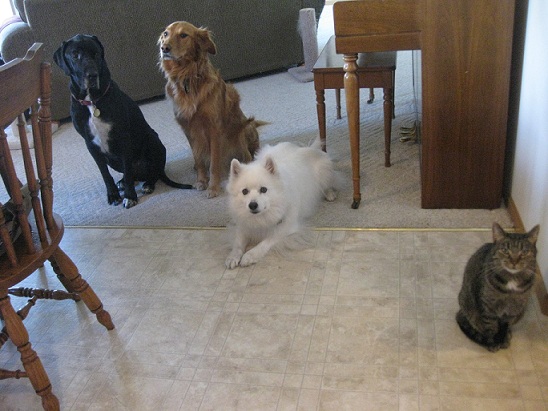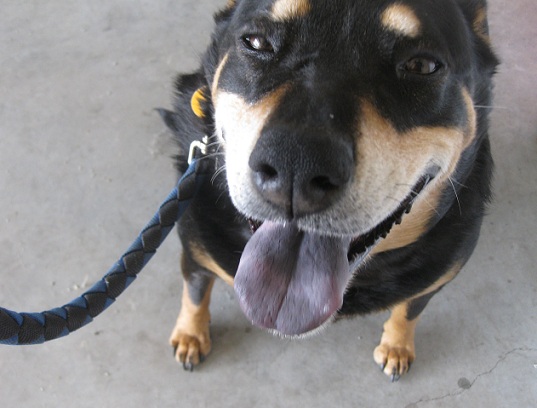If you teach your dog one thing, how to sit on command would be a good place to start.
I remember when I first adopted my Lab mix Ace, it was difficult to communicate with him because he had no concept of his name or any basic commands. Just wiping his muddy paws was a challenge since he didn’t understand I wanted him to hold still. Teaching Ace to sit was the first concept I taught him, and it helped build a foundation for future training.
The following are 12 reasons to teach a dog to sit:
1. To prevent jumping when people come to the door.

2. To get better photos.

3. For better control when managing multiple dogs.

4. To reward calm behavior before a walk.

5. To reward calm behavior before feeding the dog.

6. To distract from other dogs on a walk.

7. To reward calm behavior at the dog park.

8. To keep the dog still and calm at the vet or groomers.

9. To encourage polite dog-to-dog greetings.

10. To encourage your dog to pay attention to you.

11. It’s a foundation for more advanced training.

12. It can be used to keep your dog out of the way.

What are some other uses for the sit command?

Lindsay Stordahl
Wednesday 8th of January 2014
It also helps to have a quick camera!
Cheryl Smyth
Friday 10th of January 2014
Definitely, since I don't use my SLR as much (and therefore, don't carry it as often), I get frustrated when my compact just can't do the job - it's not a quick camera.
Cheryl Smyth
Wednesday 8th of January 2014
There's definitely an advantage to teaching dogs to sit (and stay) when taking their pictures. The process is fun and rewarding too (for both of you - satisfaction for me, treats for them). Not only did I teach my Tessi, but I also taught a boxer, who I was dogsitting for a few weeks. On the other hand when dealing in photo sessions with dogs that don't know to sit can be quite challenging (but not impossible - that's where being a pro comes in handy, you learn to be quick.)
Clowie
Tuesday 7th of January 2014
We have found "sit" to be a very useful command in lots of situations.
Jessicavy
Tuesday 7th of January 2014
All these photos are great examples of #2. It really does help when you have multiple dogs, too. Lately I've been walking with my parent's dog as well as my own and I've been challenging the dogs by making them sit until I release them specifically. I also feel all elite when I have two dogs with me that both sit politely every time I stop.
Lindsay Stordahl
Tuesday 7th of January 2014
I've never really managed to teach dogs separate release cues, meaning releasing one at a time. Do you do that? It's probably because I have one dog so the rest are just temporary visitors or fosters.
slimdoggy
Tuesday 7th of January 2014
Great photos and a great lesson. A good sit is pretty darn important.